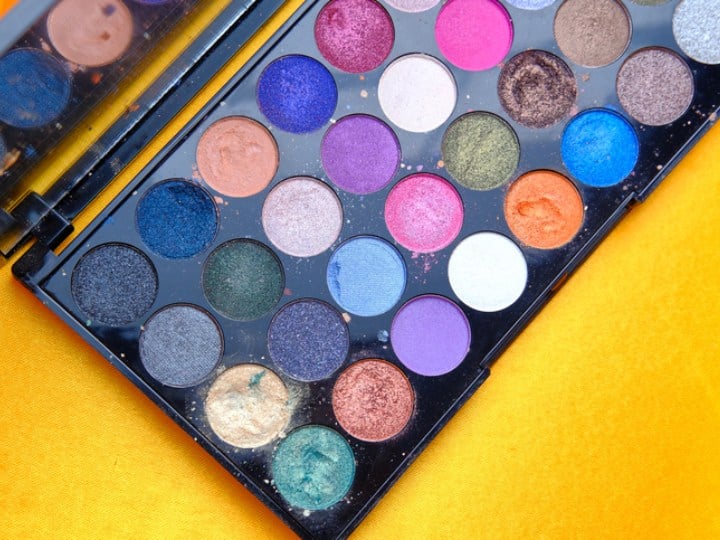Cosmetics Active Ingredients Analysis
The control of cosmetics active ingredients including skincare active ingredients such as preservatives, vitamins and sunscreens help to ensure compliance with regulations and guidelines including the EU Cosmetics Regulation (EC) 1223/2009, and cosmetics labelling requirements
Analysis and testing of cosmetic active ingredients are key to product quality and safety. Highly effective active ingredients also present an opportunity for cosmetic formulation innovation. However, the inclusion of some active substances are subject to global regulations such as the FDA or EU Cosmetics Regulation (EC) 1223/2009 pertaining to quality and dosage levels. Manufacturers, distributors and importers of personal care products must ensure that they satisfy these guidelines whilst providing the correct labelling information. Ensuring the correct dosage of active ingredients is also critical to how the product performs.
What are Active Ingredients in Cosmetic Products?
Cosmetics active ingredients are typically impart a functional benefit to the formation and make the product effective. Innovation is driving the exploration and use of novel actives and bioactives in formulations to help address functional performance areas such as anti-aging, even skin tone, brightening, hydrating, UV protection, moisturizing, elasticity. Examples of skincare active ingredients include peptides, vitamins such as Vitamin A, Vitamin C or Vitamin E, hyaluronic acid, preservatives and more. These innovations and regulatory challenges drive the need for expert analysis and testing to determine the levels and quality of these cosmetics active ingredients.
Expert Cosmetic Active Ingredient Analysis
Our scientists provide chemical and biochemical testing services, experienced method development, and technical support, to help you to ensure that products meet quality standards and comply with global regulations. We provide a wide range of active ingredient analyses including preservatives, vitamins and sunscreens.
Hyaluronic Acid
Hyaluronic acid (HA) is an active ingredient used in dermal fillers, wrinkle-filling gels, visco-supplements in cosmetics and medical devices to address skin aging. Understanding the quantity, purity, physico-chemical properties, chemical composition and microbiological properties of HA are critical to supporting product development and control the quality of raw materials. We provide a complete set of analytical testing and microbiological lab services to help you characterise and ensure quality of your HA materials and formulated products.
Preservative Analysis
Preservatives prevent cosmetic product contamination from micro-organisms during storage and continued use by the consumer. Strict rules govern the inclusion of preservatives with regard to the concentration used in the formulation. Our scientists provide broad testing expertise for the levels of preservatives in products including the dosage of these preservatives:
- Parabens (methylparaben, ethylparaben, propylparaben, butylparaben)
- Phenoxyethanol
- Triclosan
- Methylisothiazolinone and methylchloroisothiazolinone (MIT/CIT)
- Proxel (BIT)
- Benzyl Alcohol
- Chlorhexidine
- Sorbic acid (and its salt, potassium sorbate)
- Benzoic acid (and its salt, sodium benzoate)
- Dehydroacetic acid (and its salt, sodium dehydroacetate)
- Salicylic acid
Vitamins Quantification
An increasing number of antioxidants, vitamins and bio-active ingredients are used in personal care products to help repair skin and hair damage. Examples of vitamins and bio-active ingredients routinely tested include Vitamin A Retinol, Vitamin pro A Carotene, Vitamin B1 Thiamine, Vitamin B2 Riboflavin, Vitamin B3 Nicotinic Acid, Vitamin B3 Nicotinamide, Vitamin B5 Pantothenic Acid, Vitamin pro B5 Panthenol and more.
Sunscreens (and UV Filters)
Both chemical and physical sunscreens are used in cosmetic products to protect the skin from exposure to harmful UV rays. Chemical filters are powerful absorbers of both UVA and UVB rays. Physical sunscreens reflect and scatter UV light. Examples of the sunscreens routinely tested:
Chemical Sunscreens:
- Benzophenone Phenylbenzylimidazole sulphonic acid
- Octocrylene Ethylhexyl methoxycinnamate
- Ethylhexyl triazone 4-methylbenzyllidene camphor
- Butyl methoxydibenzoylmethane Diethylamino-hydroxybenzoyl-hexylbenzoate
Physical Sunscreens:
- Titanium Dioxide
- Zinc Oxide
